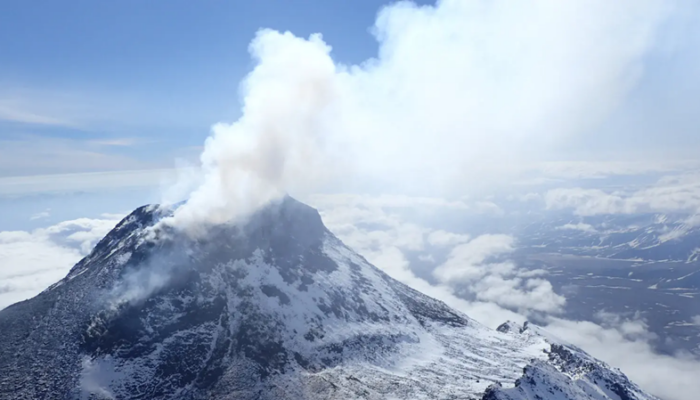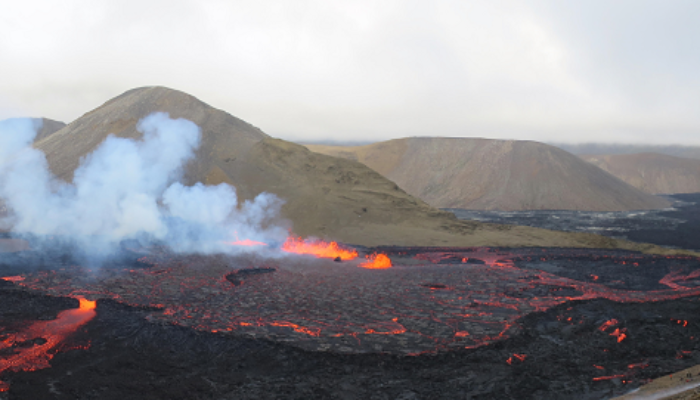Only a very small fraction of the energy produced by nuclear fusion in the Sun (3.82 x 1023 kW) reaches the top of the Earth’s atmosphere (1.7 x 1014 kW), and then only about 50% of it reaches the Earth surface, where it is absorbed by the oceans and land. This energy is radiated back as longwave infrared radiation, which is partially absorbed and after reradiated downward to the surface by the gr ...[Read More]
Fagradalsfjall 2021 versus 2022: similarity and differences
The Icelandic eruptions of 2021 and 2022 originated in the Reykjanes peninsula, characterized by the Krýsuvík-Trölladyngja system, one of the five volcanic systems present along the peninsula. This peninsula is a leaky transform fault, characterized by episodic rifts and associated volcanism. The last two years have brought about some of the most momentous volcanic eruptions in recent history. The ...[Read More]
Fire, Fog, Frost, Famine – French Revolution? The Lakagígar eruption in Iceland, 1783-1784 [Part 2]
![Fire, Fog, Frost, Famine – French Revolution? The Lakagígar eruption in Iceland, 1783-1784 [Part 2]](https://blogs.egu.eu/divisions/gmpv/files/2018/05/banner1-2-700x400.jpg)
PART II: Were the Haze Hardships caused by Men? Famine Before the Lakagígar eruption, the population of Iceland was 48810 people; four years later, it was down to 38518. Disregarding about 1500 deaths which were caused by a smallpox epidemic, the eruption may still have killed about 1/6 of the population [5]. These deaths were not directly caused by the lava or by toxic gases. The main cause was h ...[Read More]
Fire, Fog, Frost, Famine – French Revolution? The Lakagígar eruption in Iceland, 1783-1784 [Part 1]
![Fire, Fog, Frost, Famine – French Revolution? The Lakagígar eruption in Iceland, 1783-1784 [Part 1]](https://blogs.egu.eu/divisions/gmpv/files/2018/05/Figure1_southwestern_fissure_edit-700x400.jpg)
“On the 8th of June 1783, at Whitsun, there gushed forth from the mountains behind the summer pastures a fire which devastated land, cattle and humans with its effects, both nearby and far away”, wrote Reverend Jón Steingrímsson of Kirkjubæjarklaustur in his autobiography [2]. The “fire” which welled up from a volcanic fissure now known as Lakagígar (the craters of Mount Laki) was the biggest floo ...[Read More]


